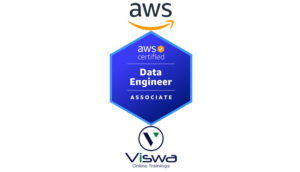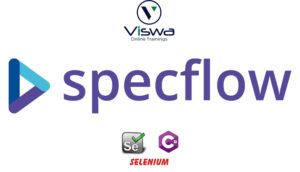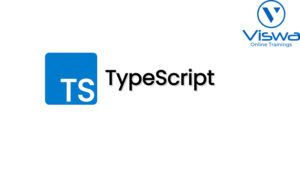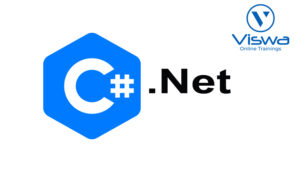MSBI (SSIS, SSRS and SSAS) Certification Training
One of the top providers of online IT training in worldwide is VISWA Online Trainings. To assist beginners and working professionals in achieving their career objectives and taking advantage of our best services, we provide a wide range of courses and online training.
Learners : 1080
Duration : 30 Days
About Course
We’ve designed our MSBI training with aspiring BI consultants, developers, and architects in mind. MSBI Online Training covers fundamental to advanced concepts of Business Intelligence, Data Warehouse (DWH), and Data Analytics (OLAP) on SSIS, SSAS, and SSRS. MSBI training that is entirely practical and up-to-date, supported by a LIVE server that is active at all times and offers JOB assistance. Enrol right away to get certified.
MSBI Training Course Syllabus
✔ SSIS Package Architecture Overview
✔ Development and Management Tools
✔ Deploying and Managing SSIS Packages
✔ Source Control for SSIS Packages
✔ The Import and Export Wizard
✔ Importing and Exporting Data
✔ Working with Packages
✔ Database Maintenance Plans
✔ Creating Database Maintenance Plans using SSMS
✔ Scheduling and Executing Plans
✔ Examining Database Maintenance Plan Packages
✔ Launching BIDS
✔ Project templates
✔ The package designer
✔ The Toolbox
✔ Solution Explorer
✔ The Properties window
✔ The Variables window
✔ The SSIS menu
✔ Control Flow Overview
✔ Precedence Constraints
✔ Execute SQL Task
✔ Bulk Insert Task
✔ File System Task
✔ FTP Task
✔ Send Mail Task
✔ Containers – grouping and looping
✔ Web Service Task
✔ WMI tasks
✔ Analysis Services tasks
✔ Execute Process Task
✔ Execute Package Task
✔ Data Flow Overview
✔ Data Sources
✔ Data Destinations
✔ Data Transformations
✔ Copy Column Transformation
✔ Derived Column Transformation
✔ Data Conversion Transformation
✔ Conditional Split Transformation
✔ Aggregate Transformation
✔ Sort Transformation
✔ Data Viewers
✔ Variables Overview
✔ Variable scope
✔ SSIS system variables
✔ Using variables in control flow
✔ Using variables in data flow
✔ Using variables to pass information between packages
✔ Property expressions
✔ Configuration Overview
✔ Configuration options
✔ Configuration discipline
✔ SSIS debugging overview
✔ Breakpoints in SSIS
✔ SSIS debugging windows
✔ Control Flow: The OnError event handler
✔ Data Flow: Error data flow
✔ Configuring Package Logging
✔ Built-in log providers
✔ Revisiting data sources and destinations
✔ He Lookup Transformation
✔ Getting Fuzzy: The Fuzzy Lookup and Fuzzy Grouping Transformations
✔ Multicast Transformation
✔ Merge and Merge Join Transformations
✔ Data Mining Query Transformation
✔ Data Mining Model Training Destination
✔ Slowly Changing Dimension Transformation
✔ Introduction to SSIS scripting
✔ SSIS script editor
✔ SSIS object model
✔ Script in Control flow: The Script Task
✔ Script in Data flow: The Script Component
✔ Introduction to SSIS component development
✔ Configurations and deployment
✔ Deployment utility
✔ Deployment options
✔ Deployment security
✔ Executing packages – DTExec and DTExecUI
✔ Data Mining Model Training Destination
✔ Slowly Changing Dimension Transformation
✔ SSIS Service
✔ Managing packages with SQL Server Management Studio Scheduling packages with SQL Server Agent
✔ Tour of Features
✔ Reporting Services Architecture
✔ Reporting Services Terminology
✔ Reporting Services Editions
✔ Taking Reporting Services for a Spin
✔ Deconstructing Reporting Services
✔ Shared Data Sources
✔ Creating Reports from Scratch
✔ Creating Expressions
✔ Using the Global Collections
✔ Formatting Items
✔ Conditional Formatting
✔ Creating Groups
✔ Calculating Totals and Percentages
✔ Interactive Sorting
✔ Creating Drill-Down Reports
✔ Creating Report Parameters
✔ Creating Drop-Down Parameters
✔ Multi-Valued Parameters
✔ Debugging Parameter Issues
✔ Creating a Basic Matrix Report
✔ Matrix Subtotals
✔ Creating a Basic Chart
✔ Exploring the Charting Possibilities
✔ Deploying Reports and Data Sources
✔ Exporting Reports and Printing
✔ Using the Web-Based Report Manager
✔ Using SQL Server Management Studio-based Reporting Services Manager
✔ Caching and Snapshots
✔ Creating Standard Subscriptions
✔ Creating Data-Driven Subscriptions
✔ Managing Subscriptions
✔ Report Builder Architecture
✔ Creating Report Model Projects
✔ Running Report Builder
✔ Core concept – BI is the cube or UDM
✔ Example cube as seen using Excel pivot table
✔ MSBI is comprehensive – more than Analysis Services on SQL Server
✔ Demonstration of SQL Reporting Services with cube as data source
✔ Understanding the development environment
✔ Creating Data Sources and Data Source Views
✔ Creating cubes – using Cube Build Wizard
✔ Refining Dimensions and Measures in BIDS
✔ KPIs Calculations
✔ Translations – cube metadata and currency localization
✔ Actions – regular, drill-through and reporting
✔ Storage topics – basic aggregations, MOLAP
✔ Advanced Storage Design – MOLAP, ROLAP, HOLAP
✔ Partitions – relational and Analysis Services partitions
✔ Customizing Aggregation Design – Processing Design
✔ Welcome to the Real-Time – Proactive Caching
✔ Cube processing options
✔ Basic syntax
✔ Using the MDX query editor in SQL Server Management Studio
✔ Most-used Functions & Common tasks
✔ New MDX functions
✔ Adding calculated members
✔ Adding scripts
✔ Adding named sets
| Live Instructor Based Training With Software |
| Lifetime access and 24×7 support |
| Certification Oriented content |
| Hands-On complete Real-time training |
| Get a certificate on course completion |
| Flexible Schedules |
| Live Recorded Videos Access |
| Study Material Provided |
MSBI Training - Upcoming Batches
7th NOV 2022
8 AM IST
Coming Soon
AM IST
5th NOV 2022
8 AM IST
Coming Soon
AM IST
Don't find suitable time ?
CHOOSE YOUR OWN COMFORTABLE LEARNING EXPERIENCE
Live Virtual Training
-
Schedule your sessions at your comfortable timings.
-
Instructor-led training, Real-time projects
-
Certification Guidance.
Self-Paced Learning
-
Complete set of live-online training sessions recorded videos.
-
Learn technology at your own pace.
-
Get access for lifetime.
Corporate Training
-
Learn As A Full Day Schedule With Discussions, Exercises,
-
Practical Use Cases
-
Design Your Own Syllabus Based
MSBI Training FAQ'S
Microsoft Business Intelligence is known as MSBI. One ETL tool that offers the best response to BI and Data Mining queries is this one. You can use scorecards, reporting analytics, and dashboards to plan and analyze your business using BI. It offers numerous tools for various BI processes using SQL Server and Visual Studio. BI transforms and processes data to deliver information. Although data and information appear to be comparable, they are not the same.
There are three tools in MSBI
- SSIS – SQL Server Integration Services
- SSRS – SQL Server Reporting Services
- SSAS – SQL Server Analytical Services
- Well, on the off chance that your SSIS Package is sent utilizing Project Deployment Model and its SSIS Package is executed inside SQL Agent JOB at that point play out the accompanying strides to send out sign in Excel format.
- Open the SSMS (SQL Server Management Studio).
- Go on to the node that is given here (Select Your Server then select Integration Services Catalog then select SSISDB, the option of your folder then move on to your project and finally selectYourPackag).
- The next step is to Right-click on Package then on Reports then on Standard Reports then on All executions as is given in the below image.
- Now when the Report is visible to you the next step is to go and click on “All messages” option that is given there
- In the Report go and do right-click on Export then Excel-like below.
In SSIS architecture, there are four main components they are:
- Integration Services Object Model: it consists of command-line utilities, controlled API, and integration service tools.
- DataFlow Engine: inbuilt buffers are present and manage the data flow from the source location to the destination.
- Integration Services: performs storage of packages and monitors the integration services.
- Integration Services runtime executables and run time: it configures execution & layouts of packages and helps in connections, configurations, breakpoints, etc.
Analysis Services is a logical information engine (Vertipaq) used for business analysis and choice support. For business reports and client applications like Power BI, Excel, Reporting Services reports, and other information perception tools, it provides enterprise-grade semantic information models. SSAS, Azure Analysis Services, and other levels of Analysis Services are all available.
Get ahead in your career by learning MSBI through VISWA Online Trainings
Unified Dimensional Model (UDM) goes about as an extension among clients and information sources.
It is important because of it-
- Enriches the client model
- Provides superior inquiries supporting the intuitive investigation
- Allows business rules to be caught in the model to give better investigation
Reviews
 Lavanya Posina2024-09-30To get the SAP S4HANA MM training is really worth from VISWA Technologies. I would like to thank you for providing an excellent training.
Lavanya Posina2024-09-30To get the SAP S4HANA MM training is really worth from VISWA Technologies. I would like to thank you for providing an excellent training. Krishna Grandhi2024-09-19I attended PBCS course. Trainer has good knowledge and his explanation is easy to understand. The support team is also supportive during the training period. Overall experience is good.
Krishna Grandhi2024-09-19I attended PBCS course. Trainer has good knowledge and his explanation is easy to understand. The support team is also supportive during the training period. Overall experience is good. Siddhartha Mothukuri2024-09-10Learnt SAP EWM and it has been a really good experience with VISWA Online Trainings and trainer has been excellent in terms of his understanding in business as well as SAP. Thank you
Siddhartha Mothukuri2024-09-10Learnt SAP EWM and it has been a really good experience with VISWA Online Trainings and trainer has been excellent in terms of his understanding in business as well as SAP. Thank you Lakshmiprasanna Annem2024-08-01Thanks chaitanya arrange for sap bw on Hana job support. I will recommend definitely anyone.
Lakshmiprasanna Annem2024-08-01Thanks chaitanya arrange for sap bw on Hana job support. I will recommend definitely anyone. VINOD reddy2024-07-23Amazing Oracle Transportation Management (OTM) training! Definitely recommend.
VINOD reddy2024-07-23Amazing Oracle Transportation Management (OTM) training! Definitely recommend. Arvind P2024-06-28Good institute. Very responsible. As a trainer I got a good experience with them
Arvind P2024-06-28Good institute. Very responsible. As a trainer I got a good experience with them srinivasulu p2024-05-14I have recently enrolled azure cloud security training. There was lots of interaction sessions. It was best online learning platform.
srinivasulu p2024-05-14I have recently enrolled azure cloud security training. There was lots of interaction sessions. It was best online learning platform. Mahendra Reddy2024-05-14I would definitely recommend it anyone looking for generative AI course. This is friendly course thanks phani kumar
Mahendra Reddy2024-05-14I would definitely recommend it anyone looking for generative AI course. This is friendly course thanks phani kumar




